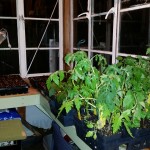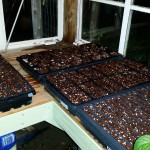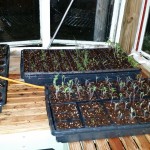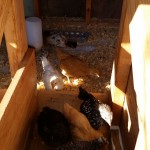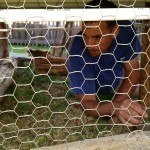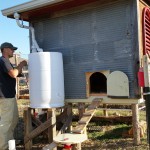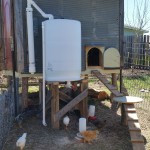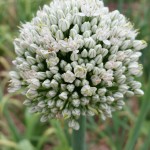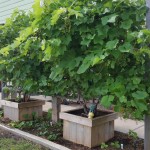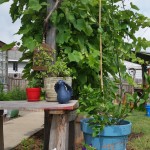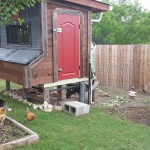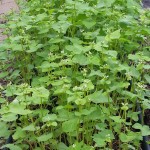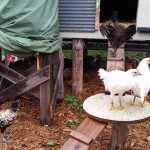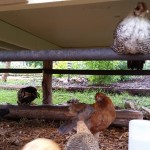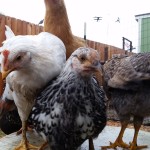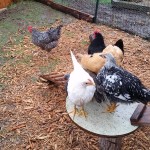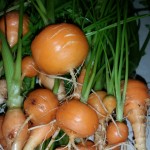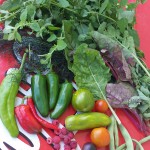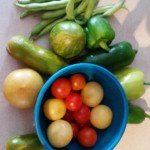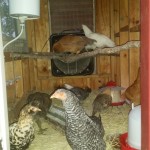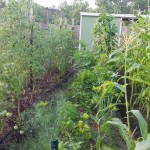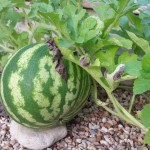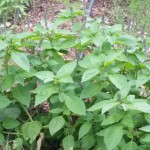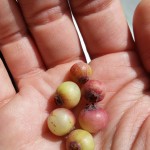Mid Summer Garden
Well I don’t think I can ever get caught up in the backyard these days! My gardens have become so large that I’m constantly cultivating the soil! It seems as if just as I’ve finished one thing, another bed needs redone!
It has been a very successful tomato season for us even though many farmers have said the complete opposite due to all of the rain! Plenty of heirloom tomatoes here! At this time I have planted about 102 in my small space. The reason for that is a greenhouse lesson learned. In the years prior I seed started in the house where the environment wasn’t ideal for sprouting. Davin was able to finish the greenhouse coop last fall and I was able to start my favorite varieties successfully for the first time. I put 3 seeds in each pod, and guess what, they all came up! So, I was able to sell a few at the farmer’s market, and donated about 40 to a few local families. Lesson learned! We will be expanding our greenhouse coop into a full greenhouse with aquaponics in one section and a chicken care station below, in addition to our seed starting stations. That will be our next big project after Davin remodels the new coop again. I swear, how many times can you rebuild something until you are satisfied with the end result?
Our chickens are 20 weeks old on Wednesday! One of our Campines has been laying for almost 2 weeks straight now but none of the other ladies have begun yet. The campine eggs are tiny, a little smaller than a guinea egg actually. The new flock is having a hard time adjusting to the heat I think because we had so much rain in the spring that it was actually pretty cool for much longer than it usually is. Since it’s dried up for the past month or so it’s been pretty hot and they are struggling, even though it hasn’t reached 100 degrees yet. Luckily we have multiple fans in both the new coop and the old coop so all of our hens are getting some relief. It does help them to lay in the summer if they have places to cool off. We have multiple locations for water and I like to give them refreshing frozen or chilled afternoon fruit treats.
We also have ten different breeds, within the 20 birds we own. Four of them are 16 months old and three of them are consistently laying. The Ameraucana hasn’t been laying eggs but has a deformed dorsal, which I’ve read is how some of the original Arcaunas were shaped. She did have some very soft shelled eggs and I’m not sure if she will lay again or not. So right now she’s helping to control the bad bug population, and fertilization. She is one of the original ten pullets that we bought 8-10 weeks old and lost 60% for different reasons. Davin calls her Corky. For anyone considering raising chickens, get them as chicks, not as older pullets. They’ll have a much better chance of survival and be much healthier if they grow up in the same environment.
Here are a few pictures to show you what’s new at our market garden-backyard homestead and some of the things we’ve done this spring and summer!
#gallery-1 { margin: auto; } #gallery-1 .gallery-item { float: left; margin-top: 10px; text-align: center; width: 33%; } #gallery-1 img { border: 2px solid #cfcfcf; } #gallery-1 .gallery-caption { margin-left: 0; } /* see gallery_shortcode() in wp-includes/media.php */
- A few plants that we got from Sunshine Community Gardens annual spring plant sale, 2015
- Seed starts in the greenhouse
- Davin’s favorite.
- Adjusting the new system.
- Drip system runs off of rainwater and is very efficient.
- Drinking harvested rainwater, packed full of electrolytes!
- Another compost pile located in Sustainable Garden Bed
- New grape bed and added garage sale decor to the gate
- French Heirloom Creme de lite Carrot
- Walking onion
- Yes, early bonding. They like to jump on my head!
- Table grapes from Stark bro’s.
- Herb garden in the spring 2015
- Citrus and succulents
- New coop
- Just a little wet from the rain
- Grew buckwheat to build the soil with nitrogen, as a beneficial insect promoter, and for chicken scratch
- Compost for the chickens to scratch in
- Everbearing raspberries
- 1015, Red, White, Texas Sweet Onions, were harvested early because of all of the rain and flooding.
- Silver Campine, Leghorn, Heritage Breed Hens
- This was our broody Australorp hen this spring! We got her back on track after a couple of weeks!
- Buff Orpington, Ameraucana, J
- Brabanter Heritage Breed Hen
- Norwegian Jaerhons, Heritage Breed Hens
- Mic relaxing
- rattlesnake that I went face to face in while cultivating the corn bed
- sunflower
- late spring/early summer harvest
- Some of the first harvests in the spring.
- Heirloom Garlic
- Giant Zinnia
- A peek in the new coop
- Garden in June
- crimson watermelon that came up on its own free will
- For some reason we have two banana spiders hanging above our nesting boxes on both coops. I’m ok with that too! They are well fed!
- Melissa, fennel, raspberries, roses, cana, and an old log that we turned into garden art in the herb garden
- Cinnamon basil
- Pink lemonade blueberries
